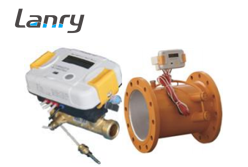In modern heating systems, ultrasonic heat meters have emerged as a popular choice for accurately measuring heat consumption. As with any technology, they come with their own set of advantages and disadvantages. This article will delve into both aspects to offer a comprehensive understanding.
Advantages
High Accuracy
Ultrasonic heat meters are renowned for their high measurement accuracy. By using ultrasonic waves to detect the flow rate of the heat - carrying medium, they can precisely measure the amount of heat transferred. They are less affected by factors such as the viscosity and density changes of the fluid, ensuring consistent and reliable readings. This accuracy is crucial for both consumers and energy suppliers, as it leads to fair billing and efficient energy management.
Low Pressure Loss
Compared to traditional mechanical heat meters, ultrasonic heat meters typically have a lower pressure loss. They do not rely on moving parts to measure flow, reducing the resistance to fluid flow within the pipeline. This results in less energy consumption for pumping the fluid, contributing to overall energy savings in the heating system.
Long Service Life
Since ultrasonic heat meters lack moving parts, there is less wear and tear over time. This significantly extends their service life compared to mechanical counterparts. Reduced maintenance requirements translate into lower long - term costs for both installation and operation.
Remote Reading and Data Logging
Many ultrasonic heat meters are equipped with advanced communication capabilities. They can transmit measurement data wirelessly, enabling remote reading and monitoring. This feature is convenient for utility companies, as it reduces the need for manual meter reading. Additionally, they can log data over time, providing valuable insights into heating patterns and energy usage trends.
Adaptability
These meters can be used in a wide range of applications, including residential, commercial, and industrial settings. They can handle different types of heating fluids and operating conditions, making them a versatile choice for various heating systems.
Disadvantages
High Initial Cost
One of the main drawbacks of ultrasonic heat meters is their relatively high initial purchase and installation cost. The advanced technology and precision components required for their operation contribute to this expense. For some budget - conscious consumers or small - scale projects, this may be a significant barrier to adoption.
Sensitivity to Fluid Quality
Although ultrasonic heat meters are generally reliable, they can be sensitive to the quality of the fluid. Particles, air bubbles, or impurities in the heating medium can interfere with the ultrasonic signals, leading to inaccurate measurements. In systems where fluid quality is not well - controlled, additional filtering and maintenance may be required to ensure accurate readings.
Complexity in Calibration
Calibrating ultrasonic heat meters can be more complex compared to traditional meters. It often requires specialized equipment and trained technicians. Incorrect calibration can lead to inaccurate measurements, which may result in billing disputes or inefficient energy management.
Limited Temperature Range
Some ultrasonic heat meters may have a limited temperature range within which they can operate accurately. Extreme temperatures, either too high or too low, can affect the performance of the ultrasonic sensors and lead to measurement errors.
In conclusion, ultrasonic heat meters offer significant advantages in terms of accuracy, low pressure loss, and long service life. However, their high initial cost, sensitivity to fluid quality, and calibration complexity should not be overlooked. When choosing a heat meter, it is essential to weigh these pros and cons based on specific requirements, budget constraints, and operating conditions.

Post time: Apr-01-2025

